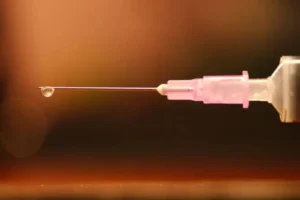I am a person that survived Hep C. I had it for 30+ years and ended up very sick. I was strung out and on the streets for years and being sick with Hep C especially made it a nightmare. I tried the old meds because I was in the early stages of cirrhosis. They made me so sick, I thought I was going to die… and they didn’t work, although they did knock the virus back for a short time. I ended up with F4 Cirrhosis and finally got a newer med that worked. I based my 19 years (and counting) of work with Hep C on personal experiences.

I was an early member of both the San Francisco Hep C Task Force and End Hep C SF, and started working in 2002 to get people, especially drug users, tested, treated, and cured, doing the work out of a big Syringe Access Program as soon as I was able to. Pierre Cédric-Crouch and I built the first Hep C Treatment Program at an SAP/Needle Exchange that I know of. It was based on a TREAT FIRST model.
At that point, it was mandated that participants get treated by a primary care physician. In our model and knowing from personal experience how devastating and disabling Hep C can be; we treated people first: No Barriers or prerequisites. I knew how much the brain fog and fatigue from HCV made people not able to function or deal with things. Adding the extraordinary challenges of substance use disorder, mental health issues, and being unhoused to this mix made it almost impossible for the most vulnerable populations that needed it most, to get treated. We got them primary care and other help but did it after they felt so much better from these effective meds. It worked remarkably well. Before being able to set this up with Pierre, I got the huge majority of people cured in research settings, primarily the wonderful HERO study.
COVID has really obstructed what we’re trying to do. I work with marginalized folks who rarely have internet access or a phone. Still, in my current work with the San Francisco Community Health Center (SFCHC), we held a meeting online with Pierre who outlined how we have done it in the past. We still are getting 5-7 people at our Hep C group weekly. We also did one 45-minute outreach and got several clients to come straight to the clinic. So, I have several clients on hold while I look for treatment options. SFCHC is looking at starting our model, hopefully in the next month but, as always, COVID is coming first.
I am very impressed with the group members and how they are so eager to get out and spread the word. Dealing with the people I am trying to reach is very much about going to them. As the smoke clears from COVID, I am looking forward to making this happen. I think that social distancing and getting “face to face” time with people is still going to be key. Online/virtual solutions are just not going to work for certain people. Often, these are the people where upstream prevention is the most important. I think that the attention paid to public health and the overall success of public health with COVID-19 in SF might come in handy down the line.
Patience is a virtue. But I have always been impatient about the barriers Hep C poz folks have to face. I had Hep for more than 30 years and ended up cirrhotic and on the streets. I know what it does to people. But the outcome is so rewarding and needs to happen. The outreach team is comprised of cured former clients, me, and a dog named Shade who many people know and love. A lot of folks stop to pet and say hello to him, and the door opens for service. We did it before and we are looking forward to doing it again.

End Hep C SF are running a series of blogs on how COVID-19 and today’s climate has changed our hepatitis C work in all areas. If you’re like to submit a blog please email info (at) endhepcsf (dot) org.



